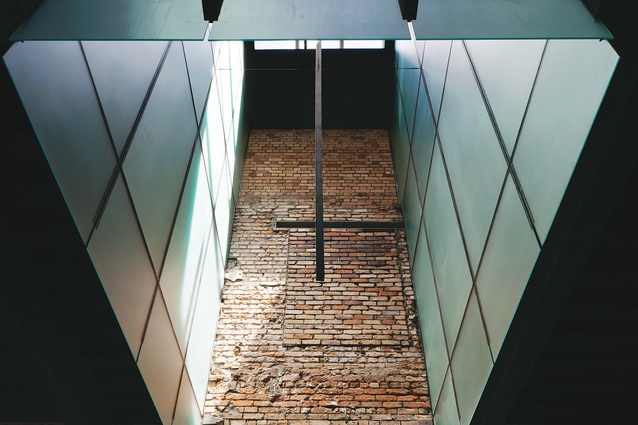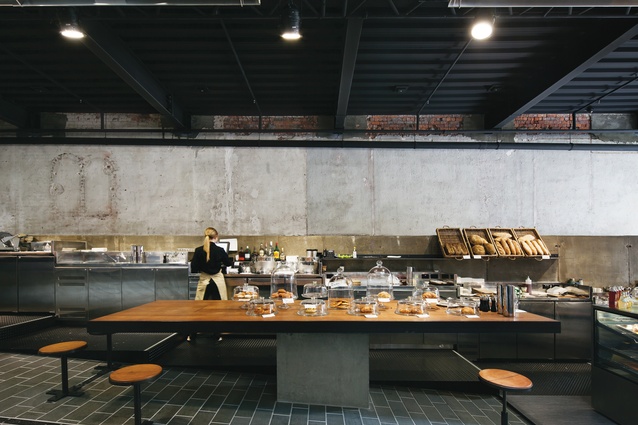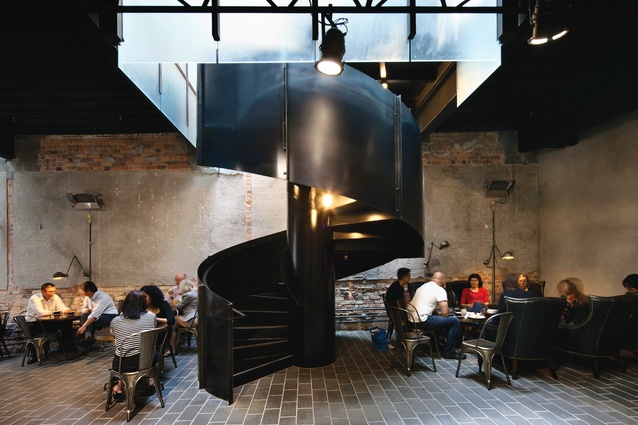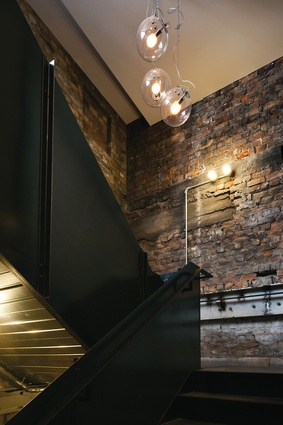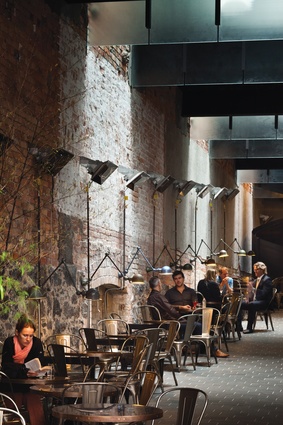The Imperial Buildings
Tommy Honey takes a history lesson down at Auckland's converted cinema complex.
Who knew that deep in a building, right on Queen Street, stood not one but two neglected picture theatres gathering dust? Very few, it would seem, apart from the previous owner, AMP, and Phillimore Properties, an Auckland development company. AMP owned the collection of three – two known as the Imperial Buildings and the other, Everybody’s Building – which front on to lower Queen Street and run right through to Fort Lane at the rear. Fort Lane was the trade accessway to several buildings and was used as a cut-through to Fort Street by couriers and anyone else in a hurry.
The retail spaces on Queen Street have long been tenanted to very high-end operators including Gucci and Michael Hill. The commercial space behind, in some places up to five storeys, were largely untenanted. The three buildings have long been joined and had evolved into a rabbit warren of spaces of varying levels with a central services shaft.
It appears to have fallen into AMP’s too-hard basket or perhaps they were simply land-banking, waiting for the right buyer to come along. Enter Phillimore Properties, a group with a passion for fixing up older buildings and finding tenants for them. Phillimore saw opportunity where AMP saw dust, and they engaged Fearon Hay Architects to help them solve the buildings’ riddles – not the least of which was the Queen Street address where, like something out of Alice in Wonderland, a tiny nondescript entrance concealed 4,000m2 of potential space. Unlocking this potential from both ends of the building became the challenge for the project.
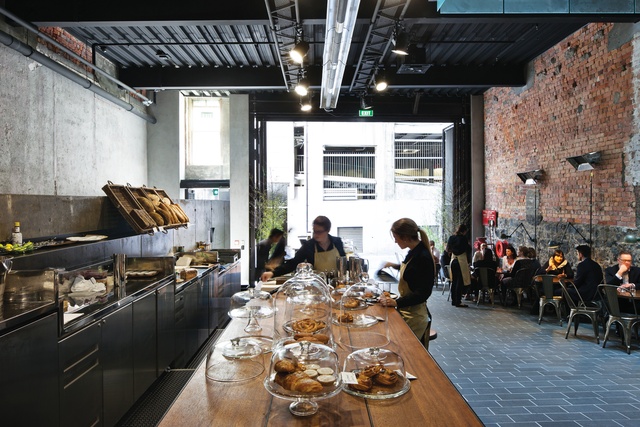
With Gucci and Michael Hill dominating the front, clearly the rear of the site became more important. The Auckland City Council was committed to making Fort Street a shared space for pedestrians and cars and they were interested in doing the same for Fort Lane. This was timely for Phillimore and Fearon Hay, as they saw this as the opportunity to open the building to the rear and integrate with the new urban fabric.
The first thing they needed to address was the circulation and to figure out how to make it viable and to develop a sense of address. The architects knew that it had to be a good commercial offering but it would require a non-traditional approach and that would need willing owners. Luckily they had these in Phillimore. So they opened a huge hole in the rear of one of the Imperial Buildings, removed a floor, replacing three floors with two high-stud spaces, and built a wide and deep ramp. To one side of the ramp is an open café operating on a slope.
The slope is not insignificant and consequently, the long serving counter steps down accordingly with three floating stations at ascending (or are they descending?) levels: long thick timber benches on beefy concrete plinths. The first is the newspaper table for reading and quaffing; the second is the coffee machine; and the third is for pastries and paying. There is a muted palette of grey, black and brown bathed in an indistinct light that initially seems borrowed from the street.
Looking up you realise that there are three skylights measuring 3x4m bringing light from the sky down two floors through the building. The lightwells protrude into the space with sheets of smoky sandblasted glass, framed in black steel, hanging, not precariously but confidently above. As well as light, they deliver an anonymity, a mission seemingly impossible. This powerful architectural gesture is almost too subtle for its own good. While standing there wondering if people would notice it at all, I saw someone wheel a pistachio-coloured Vespa through and out to the street (from where – the lift?), with barely an eye raised from a flat white. So Roman.
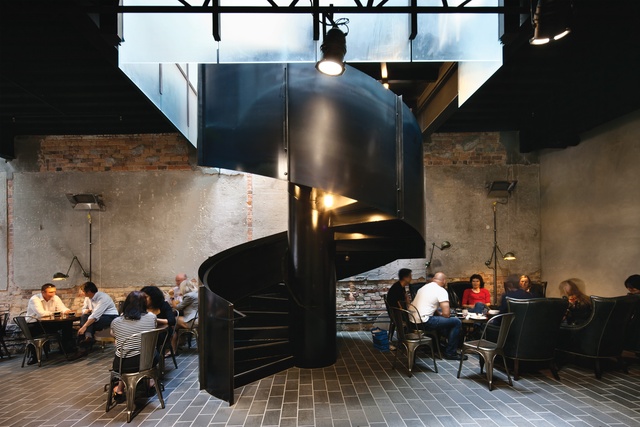
Tall black grilled gates close the space down at night, transforming café to bar when the light goes down. Small brass-topped tables line the wall opposite the serving area, illuminated by period Jieldé lamps and individually heated, accentuating the atmosphere which falls somewhere between cinematic and Parisienne. Linear radiant heaters hang above the food service to keep the space warm in winter.
At the top of the ramp the circulation splits in two: to the right, a corridor leads through to the lifts and beyond to the Queen Street entrance. Angled, indirect lighting throws the rough brick wall into relief, making this route strangely compelling. The view from Queen Street looking back is equally engaging with the bustling figures of the café silhouetted against the background sunlight of Fort Lane.
The other circulation path at the top of the ramp is to the left, up a steel circular stair that leads to an open courtyard in what was once the service shaft. This is the core of the scheme; small and imperfectly formed, its rough and readiness is the key to the whole development.
The semi-industrial nature has been retained with the spaces and balcony formed out of black steel sheet. Previous services that were a mess have been reassembled and organised but not sanitised. Between here and Queen Street are tenancies which border a shared walkway that overlooks the courtyard. While this has sacrificed net lettable area, it has created a relaxed circulation space that resolves the chaos and brings a sense of order to the disorderly.
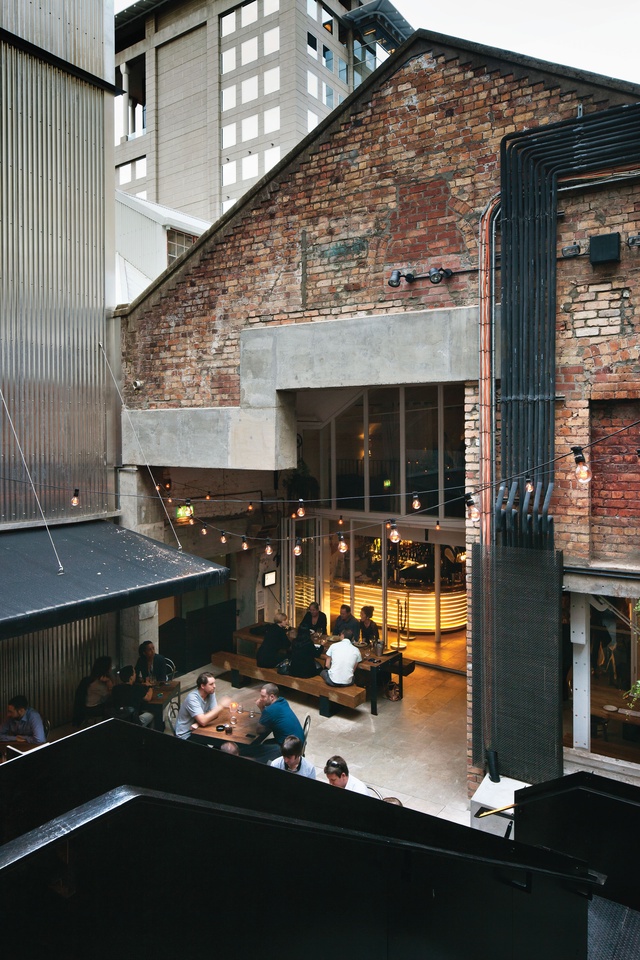
Large timber tables in the courtyard cater to customers of Everybody’s casual dining, one of two restaurants to occupy the two former cinemas, that back on to Fort Lane. The restaurants have been designed and developed by the Pack & Company, specialists in hospitality operations.
Everybody’s is a white space with the original vaulted ceiling of the cinema complete with steel ties. A sensuous mezzanine has been inserted with clustered white-shaded chandeliers falling from the ceiling. Discreet booths line one wall faced by a long open grill. At the rear is a slip-through connection to the Roxy fine-dining restaurant where the mood is darker and more refined. The gabled ceiling has been lined with timber boarding; the walls are clad in white stretcher-bond tiles and the decor muted. Stairs rise to a mezzanine with an outdoor terrace that overlooks Fort Lane. On the day of my visit a wine tasting (of course…) was just finishing and it seemed the perfect place to escape the office unnoticed.
The Imperial is thorough fare: deliberate, considered and meticulously detailed. Yet it is neither sterile nor alienating. It mixes a language of black steel, slick tiles and glass with rough brick, exposed concrete and timber that in lesser hands could easily have descended to the tacky. But here, Fearon and Hay have risen above this and produced an elegant solution, made sense of senseless circulation and have, magically, produced a silk purse from the sow’s ear that once comprised these neglected buildings.

